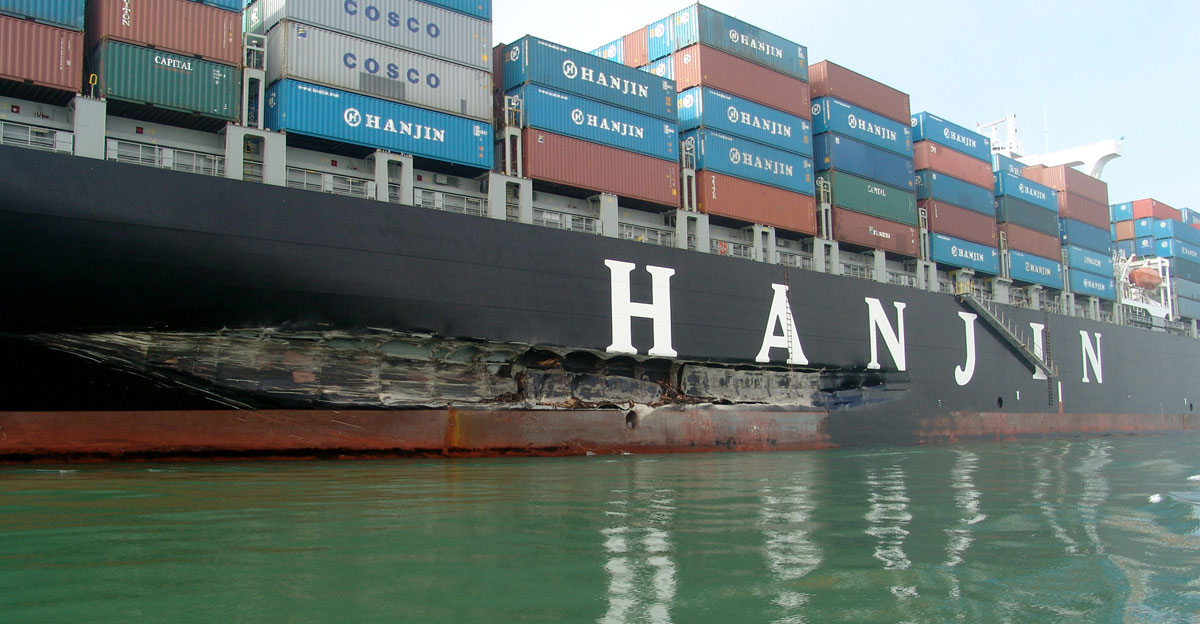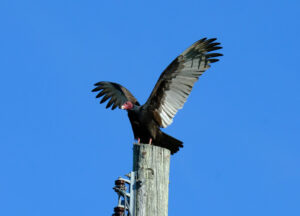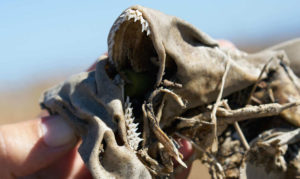The Bay was blanketed in fog on the morning of November 7, 2007 as the container ship M/V Cosco Busan steamed out of the Port of Oakland, toward the Golden Gate. Due to a chain of blunders by its crew, marine agencies, and a pilot who a court later determined had overdosed on prescription medication, the vessel’s hull scraped against a fender at the base of Bay Bridge support tower, tearing a 200-foot gash into its hull. More than 53,000 gallons of thick bunker fuel from two of the ship’s fuel tanks gushed into the Bay. It was the worst oil spill to occur here since 1984.
Along the coast the slick extended north nearly to Limantour Spit in the Point Reyes National Seashore, and south to Pillar Point Harbor. Inside the Bay oil extended from the San Rafael Bridge to Oakland Inner Harbor Channel, oiling the shorelines at San Quentin, Tiburon, Richardson Bay and Angel Island. An estimated 6,849 seabirds and waterfowl died as a result of the spill, according to a report prepared for the California Department of Fish and Wildlife Office of Spill Prevention and Response, and the oil reduced up to one-third of that year’s herring spawn.
In 2011 the ship’s owners and operators reached a settlement with federal, local and state officials to provide $44 million to attempt to repair the damage. In 2012 state and federal spill trustee agencies—the California Department of Fish and Wildlife, California State Lands Commission, National Oceanic and Atmospheric Administration, U.S. Fish and Wildlife Service, National Park Service, and Bureau of Land Management—released finalized plans for the money aimed at improving roosting and nesting habitats, restoring eelgrass and oyster beds, trail-building, and other recreation infrastructure work.
Today on the 10th anniversary of the spill, around one third of the $32.3 million directed toward restoration has been spent. Steve Hampton, the assistant deputy administrator of the California Department of Fish and Wildlife, says the restoration plan was built up through rigorous analysis and surveys of four categories: birds, fish/eelgrass; habitat; recreational use.
“We build the pie piece-by-piece and each one had its own legal argument,” he says. The $18.8 million allocated toward recreational use projects was based on an estimate of lost user-days, with each “day” equal to one person on an outing, which could be anything from a dog walk along the coast to a boating trip. Lost user-days are multiplied by the value of each day to public health and enjoyment in order to land on a monetary figure.
The trustees used a process called resource equivalency analysis to determine restoration funds needed to repair harm to birds ($5 million), fish/eelgrass ($2.5 million), and habitat ($4 million).
Some conservation groups, such as San Francisco Baykeeper, have criticized the amount spent on recreation. Sejal Choksi-Chugh, Baykeeper’s executive director, said the group sits on two of the spill funding allocation committees because it wants a hand in ranking and prioritizing the regions of the Bay that are at greatest risk to future oil spills. Baykeeper would like to see more restoration work done in these most vulnerable areas, she said, adding that “ideal habitat for wildlife doesn’t necessarily overlap with the areas that are more accessible for recreational purposes.”
How the Cosco Busan settlement has been spent to date
| PROJECT | AMOUNT |
| Farallon Island Nest Site Construction Installed permanent artificial habitat for Cassin’s and Rhinoceros auklets. |
$95,192 |
| Eden Landing Salt Pond Restoration Salt ponds are important summer habitat for snowy plovers and wintering ground for diving ducks. |
$774,797 |
| Marbled Murrelet Restoration In nesting areas, reducing egg predation by jays and corvids. |
$456,832 |
| Surf Scoter Restoration Included projects to improve access to eelgrass, where scoters feed on herring roe, and to remove derelict fishing nets which can entangle the birds. |
$270,956 |
| Eelgrass Restoration Includes transplanting eelgrass, a key habitat for spawning herring to grow new beds, with target of 70 new acres of eelgrass. |
$1,139,967 |
| Aramburu Island Restoration Improved bird habitat and reinforced shoreline to protect surrounding communities from sea level rise |
$1,002,417 |
| Muir Beach Dune Restoration Improved function of dunes and riparian habitat in flood plain |
$175,000 |
| Albany Beach Restoration Restored sandy beach habitat, infrastructure improvements |
$1,300,000 |
| Native Oyster Restoration | $520,101 |
| Rockweed Restoration Researchers from UC Santa Cruz have successfully transplanted rockweed (harmed in spill) near Point Isabel and are now working to repeat that experiment near the San Leandro Marina. |
$447,871 |
| Recreational Use Projects, National Park Service (17 projects) Educational exhibits to lifeguard training to trail and seawall repair. Beach access, parking lot repairs, and animal-proof trash bins. |
$7,939,931 |
| Recreational Use Projects, state (25 projects) Projects range from removing derelict boats and debris from the Oakland estuary to improving beach access and trails across the Bay Area |
$5,547,159 |





